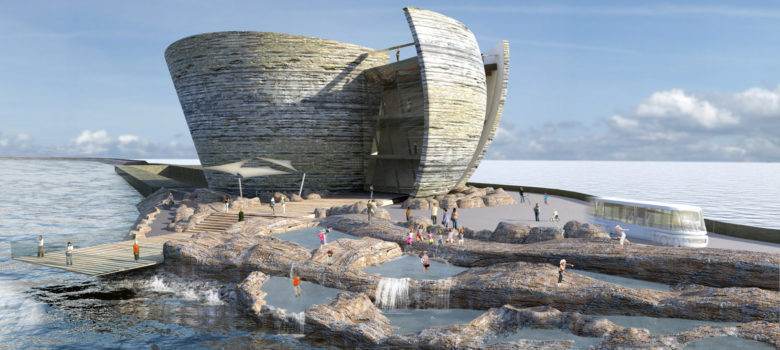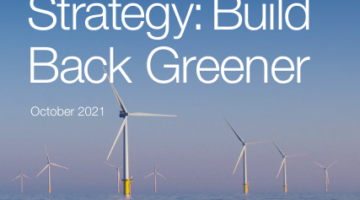
What types of tidal power exist?
There are three main mechanisms for harnessing tidal energy. All three exploit the difference in water level at high and low tide to generate electricity, but they go about it in very different ways:
Tidal stream
Turbines are installed under water in a tidal stream, taking advantage of a fast-flowing body of water created by tides. These turbines have been designed to take advantage of the dual directional flow of the tidal current. They are most effective in shallow water.
Because the turbines are very large, they can disrupt the tide they are trying to harness.
Tidal barrage
Tidal barrages are effectively large dams. These can be built across a river estuary and when the tide goes in and out, water flows through tunnels in the dam. This pushes turbines, which generate kinetic energy. Lock gates can be installed to let ships through the wall.
Because tidal barrages completely block the normal flow of water, they can be very damaging to marine life. Changes in the water level – and lowered salinity from reduced water flow – disrupts plant and animal life. The movement of fish in the tidal range is disrupted. Food sources for birds are changed or reduced, meaning they may be forced to go elsewhere
Tidal lagoon
These are different from tidal barrages in that they do not form a barrier all the way across a coastline or estuary. They can be sited offshore, and consist of a (normally circular) perimeter embankment impounding water. Energy production works in two ways: at high tide, a barrier goes up and water rushes into the lagoon through turbines, generating kinetic energy. At low tide, water that has built up inside the lagoon does the same on its way out. The structure looks like a sea wall at low tide, and disappears under the water at high tide.
Because tidal lagoons don’t form a blockade across a large area of coastline, they are less ecologically damaging than barrages. Fish can swim around the structures, and the movement of silt is not as affected.
UK tidal development
The potential of tidal power generation in the UK has long been recognised, with the exceptionally strong tidal ranges in the Severn Estuary providing an opportunity for huge levels of electricity generation. Until now, no projects have got past the proposal or planning stages, but (in a world first), construction is about to begin on Swansea Bay Tidal Lagoon.
Swansea Bay Tidal Lagoon
Swansea’s tidal lagoon will cost £1billion to build and will generate 320MW, enough to power more than 155,000 homes. A manmade dam off the coast will trap water, releasing it in and out of underwater turbines as water flows in and out with the tides.
Because of the nature of tides, the plant will not produce power consistently, but it will generate huge amounts. Over a 24-hour period, it will produce energy as four distinct ‘pulses’, with each lasting about 3.5 hours. Unlike other forms of renewable energy, such as wind turbines and solar PV, energy output is entirely predictable. The lagoon is expected to be operational for at least 120 years.
The project has been delayed by years of debate over the possible ecological effects of the barrage and the huge economic investment required to get it off its feet. After an independent review and extensive testing, the project has finally been given the go-ahead. No form of energy generation will have no environmental impact, so it is all about lessening it. The people behind Swansea Bay tidal lagoon are clearly committed to reducing damage as much as possible.
Construction will start in Spring 2018, and the plant will start generating power in 2022. If all goes well, Swansea tidal lagoon should be a trailblazer in renewable energy generation, attracting investors to build plants on a bigger scale. There are already five others planned for the UK. If all of these were to go ahead, they could generate 10% of the UK’s energy, as well as being a major economic export.
Pros of tidal lagoons
- Its source is fully renewable, and will never run out!
- It produces no carbon emissions.
- It’s reliable and predictable.
- The tidal lagoon will be functional for a minimum of 120 years. Nuclear reactors last an average of 40-60 years before being decommissioned.
- Less damaging to marine life than other kinds of tidal energy.
Cons of tidal lagoons
- It can impact on marine life – although these effects are localised, not global, unlike the environmental effects of some other forms of energy production. They can also be limited, with proper planning.












No Comments yet! Be the first one.